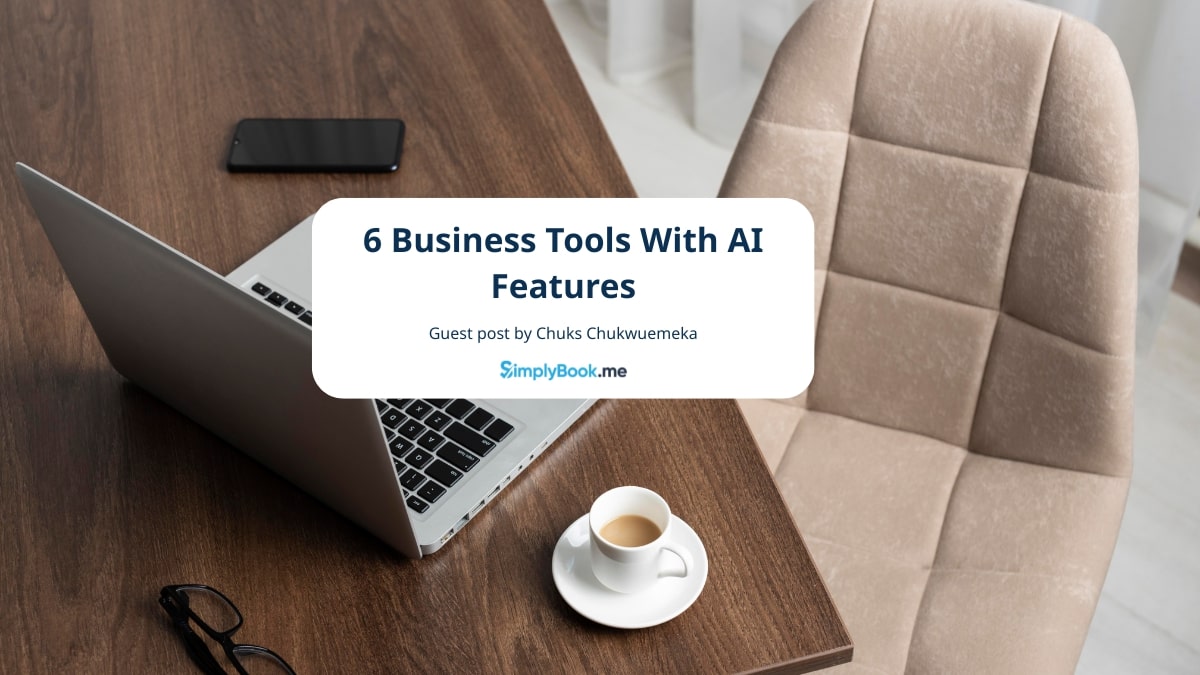Marketing During Quiet Months

Every business goes through a ‘quiet’ season when bookings are down. While the holiday season may be a busy time for specific industries (retail, eCommerce, etc.), it may be a quieter period for service businesses like tutoring, consulting, child care services, etc. These businesses can often see a drop in activity during the holidays because people have more time off work, school, or whatever else may be happening with their families. During the quiet period, businesses may have more time to plan and prepare for their upcoming projects. To be successful in these times, it’s crucial to ensure that your marketing efforts are aligned with your business goals.
[Source]
Please note that more people than ever are looking to achieve their fitness goals via 1:1 (or group) training sessions, level up in their careers via expert coaching classes, be more conscious of their mental health and rejuvenate themselves via at-home spa sessions, etc.
[Source]
This means that now more than ever, you need to make sure you are as prepared as possible so that when your customer calls or email, you have all of their questions answered right away to convert them faster.
Things You Can Do During The Quiet Period(S)
Audit Your Assets
While there is a lot of noise, ensuring you’re on top of your game is essential. The most important thing you can do is audit your assets and track your budget:— website, app, and physical space for things to fix.
When auditing your online assets:
Perform A Malware Check
Checking for malware is a crucial way to keep your customers safe. This is especially important if you have a lot of visitors from search engines or other third-party sources that don’t necessarily verify their identity before they visit your site.
Malware can be dangerous and damage your reputation if it infects your site. If you find a piece of malware on your site, you should remove it immediately to avoid getting blacklisted.
It’s also a good idea to update your website or app with new information during this period. This will help keep customers on track with what’s happening with the company and make them feel more connected to what you do every day.
Do A Technical SEO Marketing Check
When you’re not getting as many visitors to your site or app, it’s a good idea to look at your SEO.
A lot of time can pass between when you make changes and when Google notices them. If you’ve been working on new content, that’s great. But if you haven’t updated your site in a while, that could mean the keywords you were previously ranking for have heavily lost their search volume or your content doesn’t follow the latest Google content guidelines.
That means it might be time for technical SEO work — like checking for broken links or updating old pages with new content.
Check If The Sitemap Is Comprehensive
During the quiet months, you may need to check if the sitemap is comprehensive. It’s essential to keep in mind that your website is not just a collection of content; it’s also an opportunity for people to find out more about your business so they can make an informed purchase decision. Use a tool like Slickplan, one of the best free sitemap generators online.
When you’re checking the site map, look at how well-organized it is. Are all of your pages linked together? Is there a clear hierarchy? Is there too much text or pictures on some of them?
You should also look at how many links are pointing to each page. If there aren’t enough, that could indicate that your site isn’t optimized for search engines. You might want to consider adding some more keywords that relate to your services and industry so that they’re more accessible for people to find when they’re searching online.
When auditing your physical assets, verify if your salon needs a repaint, if your old logo is still showing up somewhere, and if your branding and aesthetics are consistent throughout.
Prepare For The Future
Predicting sales is almost impossible, so it’s important to be prepared for the worst. With this in mind, you want to ensure you’re ready if your business slows down during the slow months.
The trick is to create a marketing calendar to help guide your sales efforts throughout the year.
Here are some tips on how to do that:
- Identify your target audience and their needs.
- Create a marketing plan that includes both online and offline strategies.
- Set up social media accounts for each channel.
- Create a sales funnel for each channel and landing pages for each channel (including mobile).
Some ideas for making the most of the quiet months and setting up your business for success as soon as the optimum season hits:
- Research non-profit organizations that offer services similar to yours and reach out to them with a pitch asking if they could use your services in their marketing efforts.
- Contact local radio stations and ask if they would be willing to feature your business in an interview or segment on their show. If possible, include a link back to your website or social media page so people can learn more about your business if they choose to do so!
- Build relationships with local bloggers and journalists who cover topics related to your service and try to get featured in their publications.
Audit Your Marketing Performance
The quiet months are a great time to re-examine your business and ensure it is still where you want it to be.
For example, if you’re a coaching business that offers products but doesn’t have a sales team in place yet, this is the perfect time to get one. Or if you want your service business to grow, maybe now is the time to hire someone full-time who can manage that growth and help reach new customers.
There’s no guarantee of sales volume when you’re in a service business. If your company builds up a good reputation and gets more referrals, then it starts to slow down.
If you’re not getting enough leads during the quiet months, it may be time for a rethinking session about your marketing strategy.
Here are some things that you should consider:
Audit Your Performance From Last Year
How did you perform in the past year? If you had a good year and were profitable, then maybe it’s time to look at how you can improve this for next year.
Relook At Your Pricing — Does It Need To Be Revised?
Is there something about your pricing that needs to change? Are there any discounts or incentives that could help build up new customers? Perhaps someone needs an upgrade, or they’ve been loyal customers who just need a reminder.
[Source]
Or perhaps they’ve been asking questions but aren’t ready yet to make a purchase themselves (for example: “I’d love to buy this item, but I’m waiting until my company pays its invoices”). In these cases, it’s important not to discount heavily but keep them engaged with your brand, so they buy when the time is right.
Analyze Your Marketing Strategy To Improve
For example, if you have a lot of flyers in your mailbox but not many leads coming through them, it might be time to take a closer look at what you’re doing with them. Are you sending out too many? Do people get confused about where to send their information? Are they not being appropriately distributed?
If so, you can quickly fix that by taking a closer look at your current flyers and ensuring they are easy to understand and valuable for people. You can also make changes to attract more customers and increase customer retention rates (i.e., collecting email addresses).
Look Around
During the quiet months, look at new opportunities. You may not have enough time to explore new marketing opportunities in the daily grind.
[Source]
Do a competitor analysis to see if other marketing channels are worth investing in. For example, you can start an affiliate program to scale up. Or, you could launch in a new city. Or create a new vertical. All of this requires investment in time that you get during the quiet months.
The best way to do this is by using Google Keyword Planner and SEMrush tools for keyword research and competitor analysis. These tools will help you determine what your competitors are doing with their channels and what makes them stand out from others in your niche. The key here is to use these tools as early as possible before spending money on advertising campaigns or promoting yourself on social media platforms.
If your business is seasonal or dependent on seasonal events or sales cycles, it might make sense for you to focus on scaling up during the quiet months and then ramp up again around peak season.
For example, suppose your business is only open during certain times of the year (like organizing annual business conferences). In that case, it makes sense for you to focus on scaling up during those times because most businesses and sponsors are looking for someone to organize their annual seminars, conferences, and meets.
Hold Your Marketing Budgets For A Larger Push
During the quiet months, you should be holding on to your marketing budget and not spending it all at once. You will have higher demand in the summer (or your custom peak season), so you must prepare your marketing budget for this spike.
You can use these extra funds to build your sales pipeline and grow your business.
When you first start as an entrepreneur, it’s easy for all the things that need attention (and there are plenty of them) to distract you. But if you stay focused on what’s most important now, then, later on, you’ll have more time and energy for things like hiring employees and managing operations.
Final Word
Fortunately, these times of lull can make it easier to connect with customers. If businesses are willing to make an effort to engage with people now, they can find that their customers have more disposable income and a greater desire to pursue new hobbies during the peak season.
[Source]
While not every business can afford a full-time marketing team, they can still execute the strategies mentioned above to spread awareness of their business during the quiet months. Please remember that the earlier you plan for all eventualities, the better you prepare to take advantage of good opportunities when they arise.
Guest Author Bio: Anand Srinivasan

Anand Srinivasan is the founder of Hubbion, a suite of business tools and resources for small business owners.



Comments
0 commentsNo comments yet